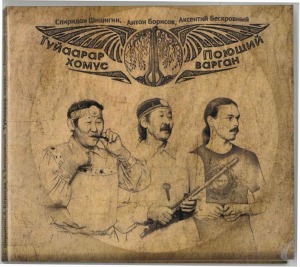Siberia to Cyber-Area Tadagawa Leo
 Leo Tadagawa presents a series of collaborations with instrumentalists from a variety of musical traditions featuring not only local versions of the Jews harp but also, amongst others: shakuhachi, sitar, bullroarer, spiritcatcher and Philippine noseflute. The players hail from Hungary to Southern China, Vietnam to Bashkortosten in the Russian Republic.
Leo Tadagawa presents a series of collaborations with instrumentalists from a variety of musical traditions featuring not only local versions of the Jews harp but also, amongst others: shakuhachi, sitar, bullroarer, spiritcatcher and Philippine noseflute. The players hail from Hungary to Southern China, Vietnam to Bashkortosten in the Russian Republic.
The term “Cyber-Area” is important to note – Mr Tadagawa has his thoughts on the future of the Jews’-harp as well as its past. His liner notes include the comment “[the] sound of the Jews’ harp is very similar to the synthesiser”, which is particularly apparent on track 10 – Iwaki Hachiman, which features the high-pitched whine of the Chinese hehe. Other tracks also possess a strange, electronic feel to them, although it is clearly stated that the album has “no effects, no overdubs”.
Accepting the (somewhat contentious) premise that with Jew’s harp it is “difficult to play anything like melodic composition”, he has decided to concentrate instead on “acoustic changes…[and a]variety of tone color or timbre” to create pieces that are largely abstract arrangements (to this listener’s ears). Consequently, the majority of pieces tend towards coolly fascinating rather than warmly engaging.
Most of the tracks are short, atmospheric pieces, moving from the fluttering and revving on Bülüü to the heavy Kecskemét; from the almost wah-wah guitar sound on Sesetan to the eerily graceful and otherworldly opening of Suehirocho.
There are two works featuring sitar, where the complex rigours of Indian classical playing are perfectly complemented by the Jew’s harp. In Barangar, for example, the harp’s interweaving adds to the sense of urgency throughout and contributes to an astonishing climax.
Some may find this a challenging collection, but the new routes and hybrids it contains make it well worth the effort; Mr Tadagawa has indeed succeeded in – as his liner notes state – “seeking unlimited possibilities from limited sound material”
Stephen Green



